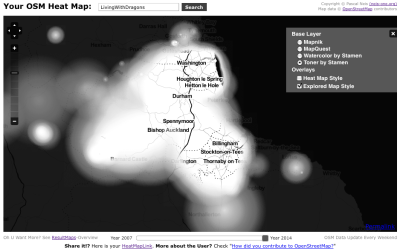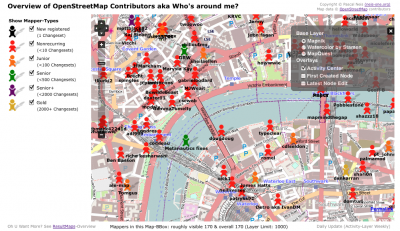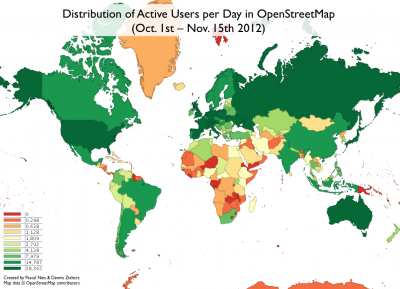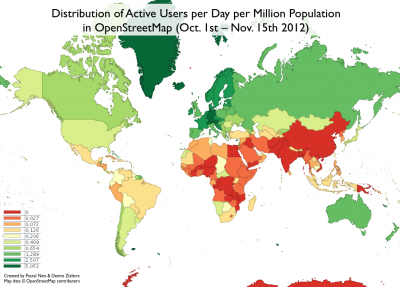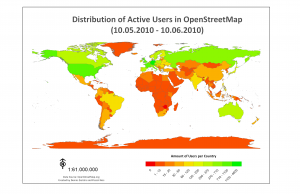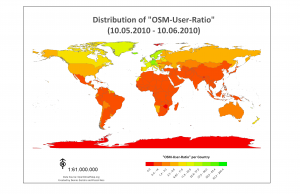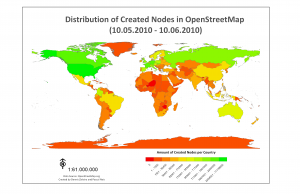Your Explored OSM World
Gregory Marler had the great idea to implement an “explored” map, based on a concept that some of you might know as “fog of war” from strategy video games. So here you go: I extended my OSM Heat Map with the “Explored Map Style”. It essentially reveals the contribution areas of an OpenStreetMap member in a “fog of war” style. The following figure shows Gregory’s amazing “explored” OSM map.
The Heat & Explored Maps are available for almost all OSM members who contributed at least several changesets here: http://yosmhm.neis-one.org (The new “Explored Map Style” can be selected in the layer panel (upper right corner). Additionally, I added the awesome looking and well known Watercolor and Toner map styles from Stamen design)
Thanks to maɪˈæmɪ Dennis
